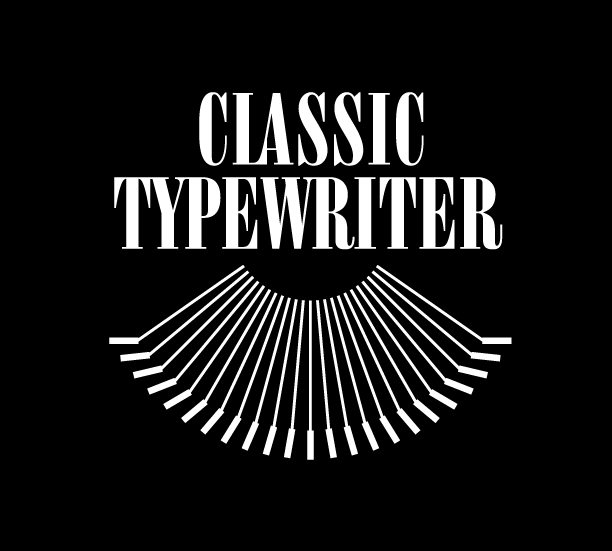Remington Noiseless Model 7 Typewriter
The quietest writing machine ever made:
Reserved for spies, clandestine poets, and parents with sleeping children.
As soon as the clack of writing machines became widespread, the noise became a problem. Manufacturers were always searching for ways to dampen the sound. If you imagine how loud one machine is, imagine now how loud a room full of secretaries or accountants could be!
So the geniuses of engineering went to work, and created and refined the noiseless mechanisms over decades and iterations.
"The Noiseless uses the momentum of a pivoted weight on each typebar to bring the type to the printing point in a relatively quiet 'kiss' which reduces the noise but requires a rigid metal platen rather than rubber to make an impression possible." - American Typewriters: A Collector's Encyclopedia
The Noiseless Typewriter Company was initially its own brand, and was bought by Remington in 1924. 6 or 7 years later, the Remington Noiseless Portable was released.
The earliest models were permanently attached to the case bottom.
There is also a desktop noiseless, which is nice however most people shy away from 50 or 70 pound machines these days: they are overkill and cumbersome.
Even the Model 8 leapt to become way bigger and blocker.
These machine has a unique aesthetic, and is instantly recognizable.
It is where angular meets elegantly rounded, modernist, elegant.
They were made in an era that toed the line between mass manufacture and hand made, so they are superior quality, particularly the earlier ones. Every detail, from the mechanics to the outer shell, to the lacquer and decals, is of the highest quality.
The paper support is the branded piece that folds down, to reveal the margin sets. So there are no little chrome fingers to break off or bend.
(I have a soft spot for these, I confess). Regale me with questions, I love that.
Variations:
Earliest models:
Small, attractive upright carriage return lever. (I like these but they grew out of fashion, like most things I like).
The early models have chrome ringed, glass keys (rare).
No tab keys.
Later models:
The branding is sometimes Underwood and sometimes Remington. Sometimes Remington Rand.
The model was licensed to each brand, but they are essentially the same.
Most have round bakelite keys with white lettering.
Gloss black in the earlier versions, matte crinkle paint in the later.
The ribbon spool covers, ornate, start as chrome-handled metal, and eventually become plastic.
Category: Portable
Years: 1932 to 1948
Features:
Large-diameter Platen is sturdy and robust.
Right and Left Margin
1,1.5, double line spacing, with indicators (Noiseless Portable models only have 2 line space settings).
Two tone ribbon selector.
Tabs, set with keys in the rear (some Nniseless Portables don’t have tabs).
Large feet provide a stable, quiet base (we often replace these with new ones).
Large rear rollers hold up well.
Keys are round and ergonomic.
Rather heavy carriage shift.
Quiet end of line bell ('Noiseless')
Sound dampening features make for a machine that actually is QUIET (It's more of a thump than a clack).
Manufactured in the United States.
Carriage lock for safe transport.
Robust ribbon reversal that rarely fails.
Robust draw string which rarely breaks.
Plywood case with latches and lock (usually missing key), which holds up to time well. Handle often eroded, but usually works as it is lined with a metal interior.
Clear, even, attractive serif typeface, though it takes some practice and technique to achieve it!

